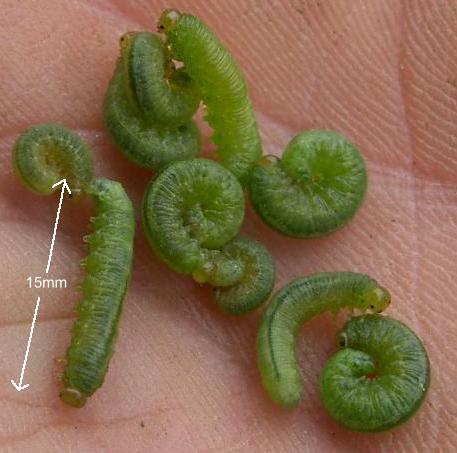Aquilegia Sawfly Larva
Scientific Name: Pristophora aquilegiae
Other Names:Columbine Sawfly, Grannies Bonnet Sawfly


The larval stages of the sawfly are the pest with this insect. They can defoliate Aquilegia or Columbine plants, leaving only the leaf veins and stalks. Although they look like small caterpillars, they develop into a non-stinging wasp-like fly.
The eggs are laid on the undersides of the leaves and when they hatch in April, the larvae eat from the edges towards the midveins. They have about 6 pairs of fleshy false legs distinguishing them from caterpillars which have between 2 to 5 pairs.
Check the leaves during April and May for signs of damage or even the eggs. If caught early the larvae can be picked off by hand or sprayed with insecticidal soap. *Imidacloprid can be applied as a drench to the soil early in the season to catch the overwintering cocoons and it will be taken into the plant to work systemically as well, killing the larvae as they feed. A general contact insecticide can be used, particularly to the undersides of the leaves when the small larvae have not done much damage - do not use during flowering to avoid killing bees and other pollinating insects.
There is no biological control - the bacterial products used on caterpillars do not work, eg. Bacillus thurengiensis .
There is thought to be only one gereration in a season so once an attack has been cleared the plants should be free of them. If the attack is severe, cutting the foliage to the ground tidies up the plant and allows a new flush of growth.
*Imidacloprid is a neonicotinoid compound and these have been suggested as as causative agents of colony collapse disorder (CCD) in Honeybees.
Back to GARDEN CREATURES